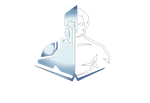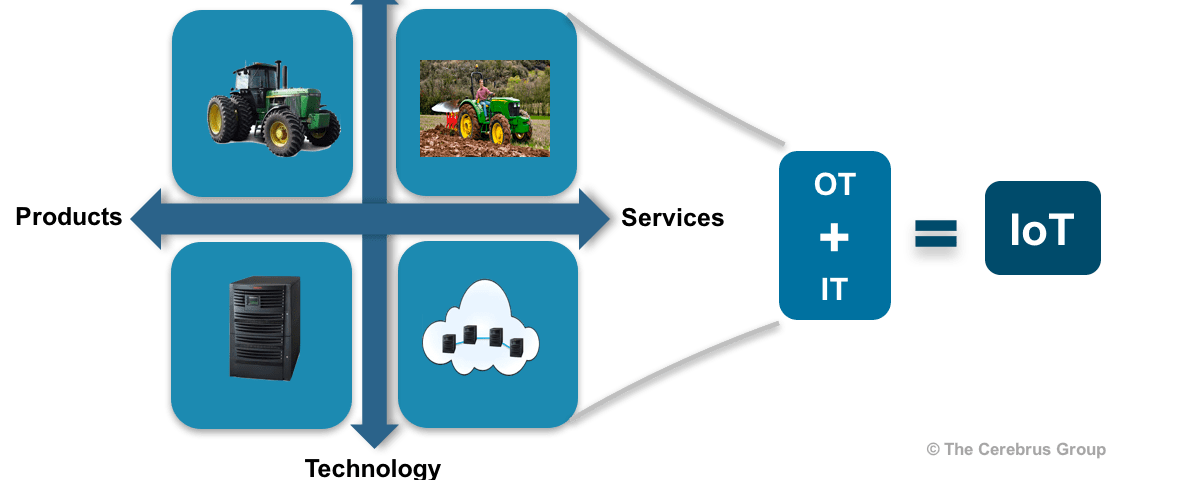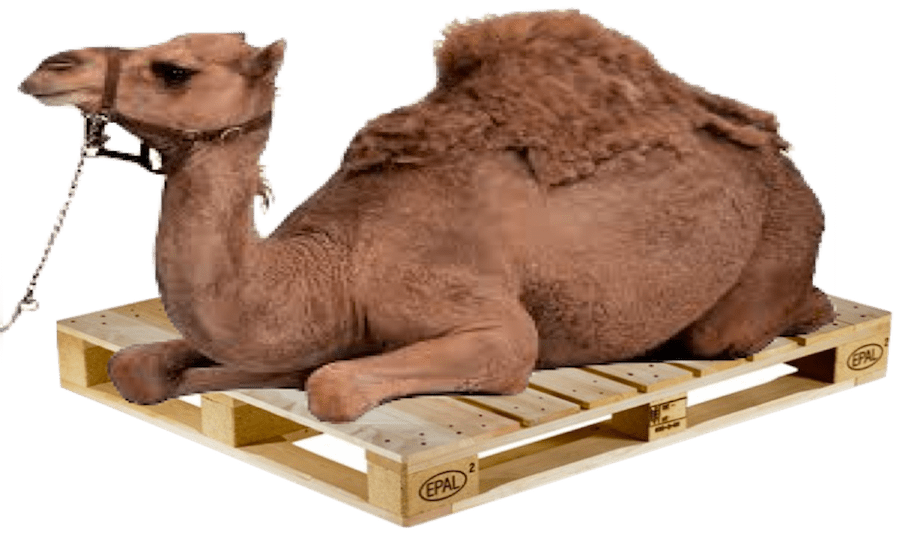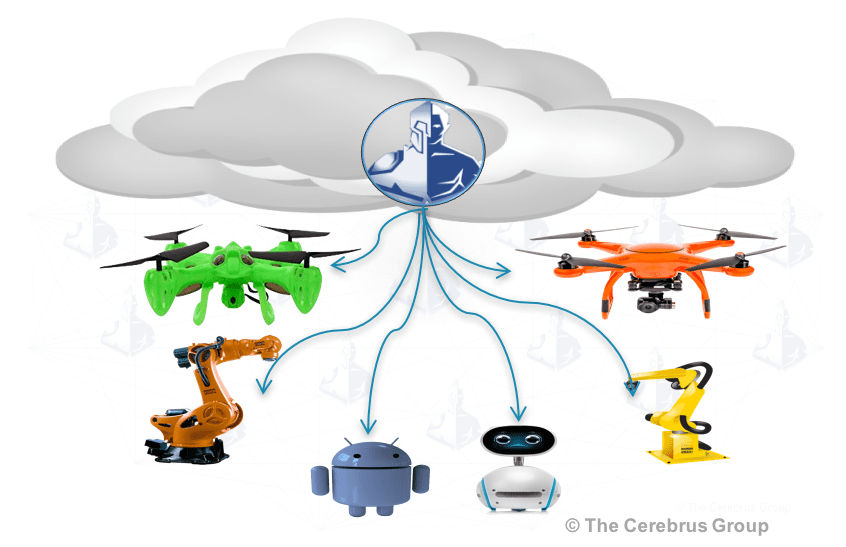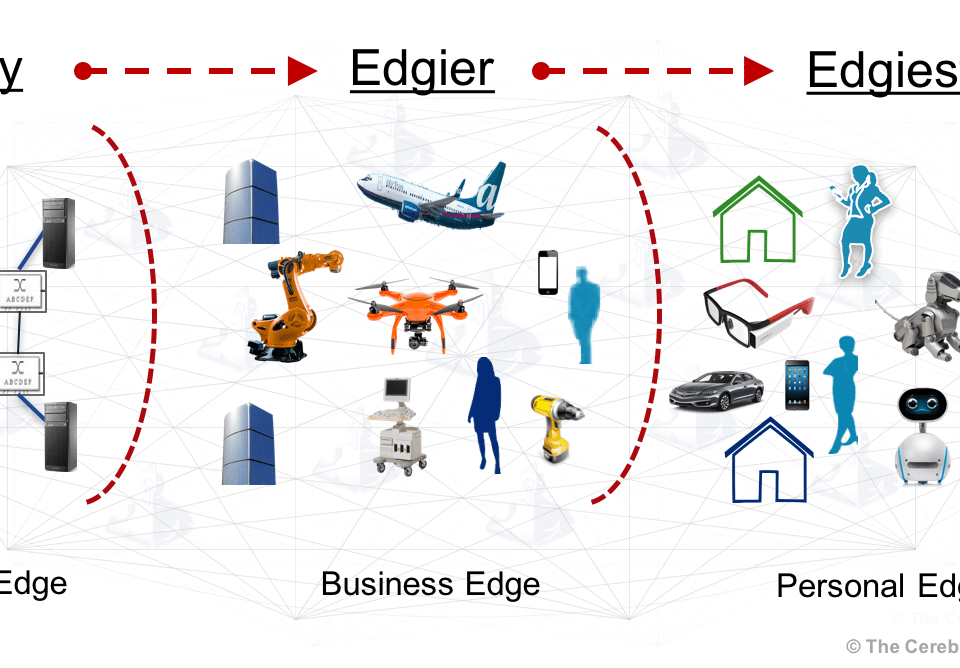IT + OT = IoT

Navigating the Digitization Maze
February 28, 2017
Intelligent Automation and Five Disruptive Shifts of Control
April 23, 2017The promise of the Internet of Things (IoT) to create unprecedented economic value is a dominant topic of recent technology & business stories. What would it take to create and capture value from connecting vast number of unconnected physical objects to the Internet? A while ago, I talked about how the dance between business and technology in this decade will unleash tremendous opportunity for people to collaborate and create value. Let’s look at how IoT takes that dance to a different level, enabling collaboration between organizations and things.
After several years of working in and observing the world of IoT, I have a simple formula for realizing the potential of IoT. It’s an equation: IT + OT = IoT.
The equation comes in two flavors: one suggests a necessary, but insufficient condition for success, a marriage of technologies; the other a marriage of two organizations.
Products-Services-Business-Technology
Let’s start by looking at the graphic below that shows how business leverages technology products and services using the 4-quadrant map of Products-Services-Business-Technology (PSBT). It will give us a framework to look at the implications of IoT.
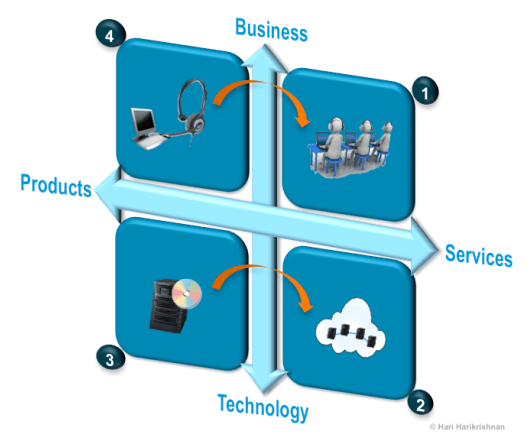
The picture shows how a few decades ago, businesses bought products (phones and computers) to run their call centers. Then they outsourced call centers en masse to services companies, consuming businesses services from quadrant 1 instead of consuming products from quadrant 4. In the technology world, cloud changed the way we consume technology. Instead of buying technology products from quadrant 3, we buy cloud services from quadrant 2. This prefabrication of IT for easier consumption mirrors the prefabrication of business services in quadrant 1 that paves the way for a range of business decisions – simple outsourcing based on core vs. context decisions to evolved business models.
Can we do the same in manufacturing sector or agricultural sector? What would it look like? Stories about connected products in manufacturing are legion. So for a change, let’s look at agriculture sector and map products used in agriculture sector to the PSBT plane as shown below.
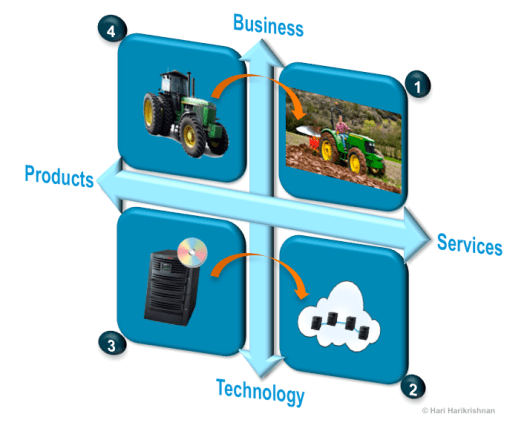
We can move from buying tractors, farming with them, and maintaining them to buying farming as a business service. i.e. Move from consumption of goods in quadrant 4, to consumption of services from quadrant 1; Do-It-Yourself farming to Get-It-Done farming, just like we saw IT move from Do-IT-Yourself to Getting-IT-Done. Outsourced labor in agribusinesses has existed for a long time due to labour shortages. So what’s new? The ability to connect the tractor to the network is new. Once you do that some application software from quadrant 2 cloud can monitor, manage, and maintain it. All of a sudden, new ways of measuring consumption and pricing based on measured consumption opens up. Voila, you have Tractor-as-a-Service powered by SaaS (quadrant 1 business service powered by quadrant 2’s IT service), complementing on-premise outsourced labour (at least until the tractor itself becomes autonomous). To top it all, this could all be paid for based on the outcome of agricultural yield or cost savings in farming, thus aligning the financial success of supplier and customer tightly.
Clearly Internet of Things is about value creation via our ability to communicate and control things over connections and automating the way we get work done. Products with embedded intelligence talking to the cloud brings the power of remote control to everyday things, much like iPhone and iCloud has done.
All of this requires information technology (IT) to be embedded in the business systems that we run our businesses on. In other words, it is operational technologies (OT) with IT inside. Ergo, IT + OT = IoT.
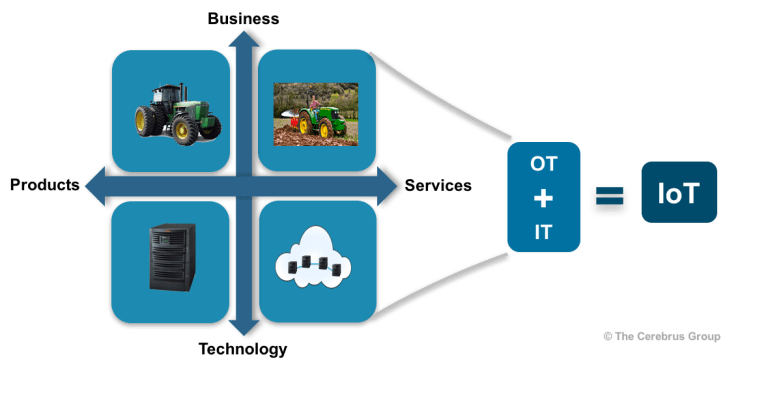
Are we done yet? No, we have just begun by establishing that information technology embedded in business systems opens up new services and solutions. How do we realize this in practice in our organizations where IT organizations and business operations groups and business units have historically operated not exactly in tandem? That requires another IT+OT collaboration that involves people and processes.
How organizations cross-pollinate ideas – one learning the business and looking for ways to apply IT, the other realizing IT’s potential and looking for ways to improve the business operations. This is the all-important part two of IT + OT = IoT equation.
If we get both these parts right, we can all look forward to higher levels of productivity from IT powering operational technologies and automating business operations as well as our daily tasks. That, in short, is digitization.
